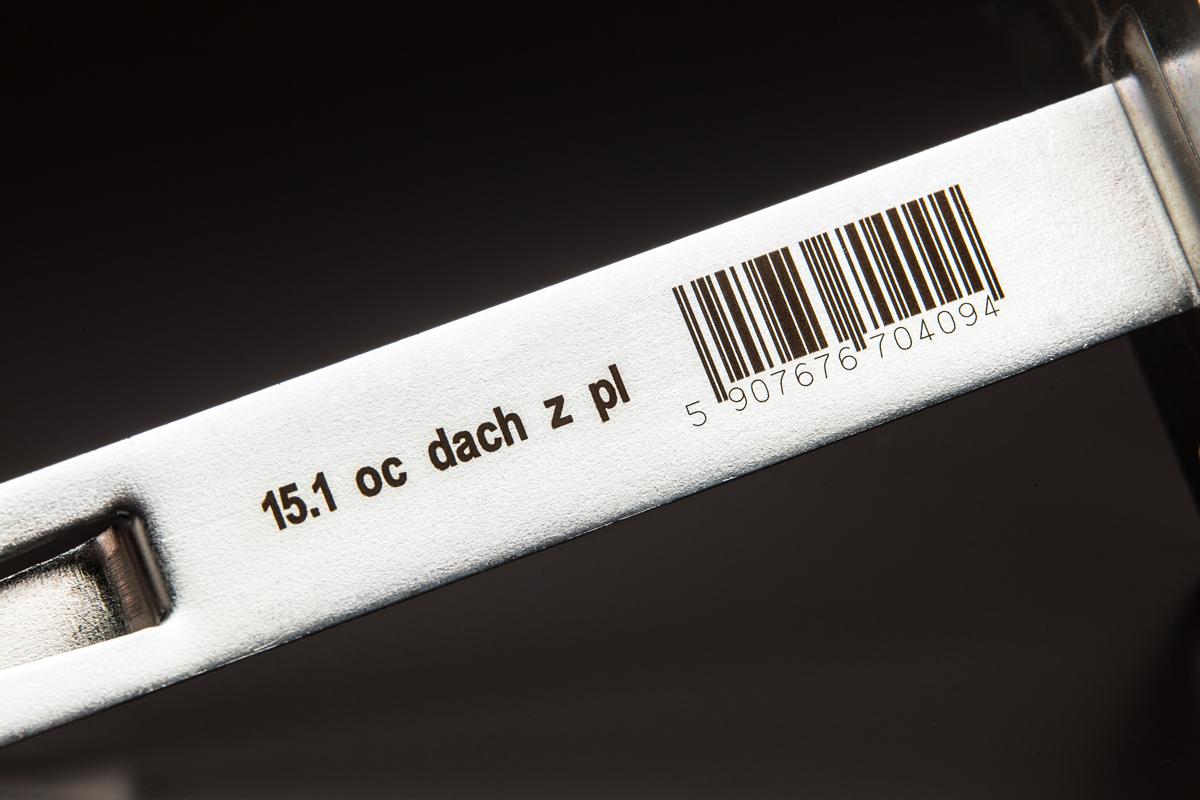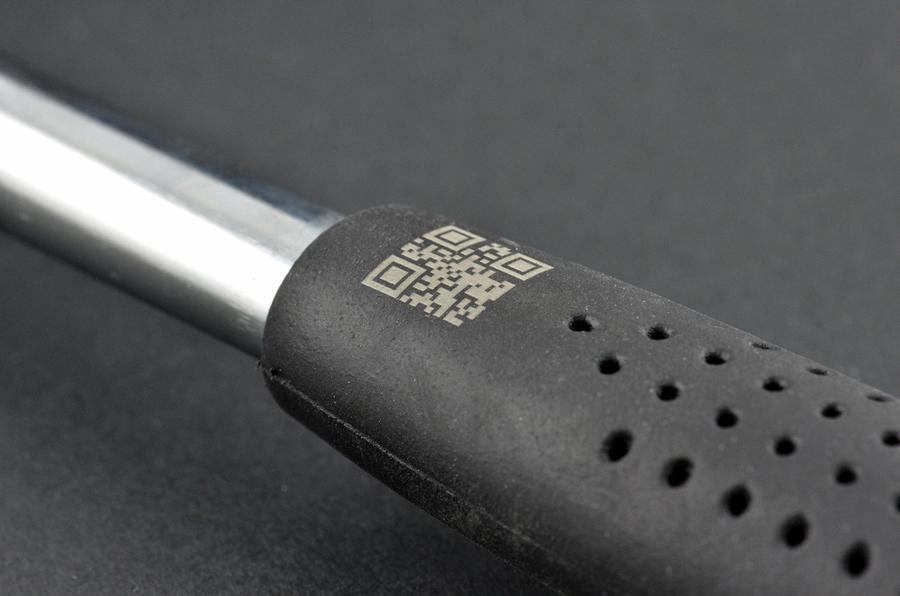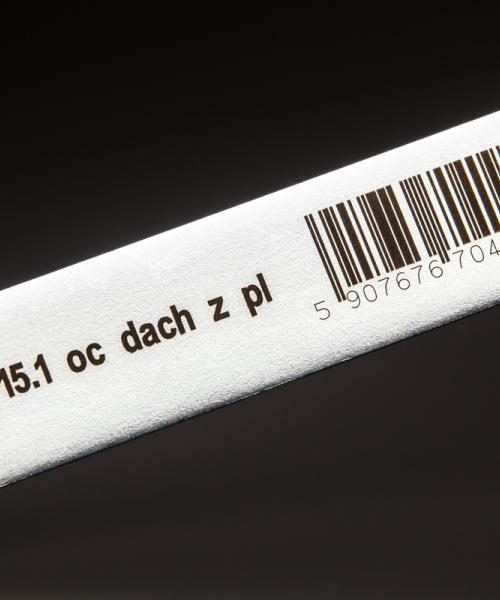One-dimensional barcodes (or 1D codes) have been used in the industry for 30 years. But today, they are gradually being replaced by 2D codes, such as Datamatrix, which offer greater information storage capacity. On industrial products, such as bearings or automotive injectors, both codes can be present, enabling camera reading (for human reading, plain text is required).
But what are their specific features? And how are they used in traceability? Focus on 1D and 2D codes and their uses.

1D code VS 2D code: what are we talking about ?
Distinction between 1D and 2D codes
You've probably heard of 1D codes. These are linear barcodes made up of lines and numbers, printed on labels or product packaging. They are widely used in retail for product check-out and inventory.
The advantage of this identification code format is that it can be read by simple, inexpensive scanners. But the number of characters that can be encoded via 1D codes is limited. Not to mention that they are not very robust: if a bar is missing from the code, reading becomes impossible.
Please note: these codes cannot be marked by dot peen, but rather by laser or inkjet, directly on the part, or by printing on a paper label to be affixed to the product.
2D codes not only change shape, but also dimension. Most often square or rectangular, these universal two-dimensional codes are made up of juxtaposed dots : QR codes and Datamatrix, for example.
The advantage of these 2D codes : To increase data storage, and repeat the same information in several places for security reasons. As a result, 2D codes can meet the most demanding product traceability requirements. Datamatrix and QR code marking can be applied to products using a laser or dot peen machine, as well as by DPM inkjet or label printing.
| Code 1D | Code 2D | |
|---|---|---|
| Representation |

|

|
| Features |
|
|
To know
Product traceability requires administrative management of encoded data (sending, receiving, storage…), which is why it's important to choose a high-performance identification machine that can communicate with your management system.
This is one of the criteria to take into account when choosing a marking machine capable of meeting your industrial needs.

The advantages of datamatrix codes
Like QR codes, Datamatrix codes are 2D codes. Above all, they are smaller in size which is an advantage on small parts.
Compared with one-dimensional (1D) codes, Datamatrix codes can also encode a larger amount of information in a smaller area.
Although Datamatrix marking allows less data encoding than QR code marking (1556 bytes of information versus 2556 bytes for the QR code), Datamatrix codes easily meet industrial traceability needs and remain the most widely used 2D code in this field.
Information redundancy also means that the code can be read even if the pattern is partly erased or missing. It is therefore possible to lose up to 25% of the surface area of a 2D code without affecting its readability.
Industry standards and types of scanning codes: how to choose?
In the industry, 1D, 2D and QR code marking are common ways to trace parts. It is the major industry standards groups that determine which type of code is preferred for which application. For example, the AIAG (Automotive Industry Action Group) in the automotive sector, or the ATA (Air Transport Association) in aeronautics.
Due to its high level of security, Datamatrix code version ECC 200 is most often recommended. It has thus become the most widespread standard for ensuring metal, glass, ceramic or plastic products traceability.
|
Main industry standards |
|
| 🏭 Industry coding standards | |
| ISO/IEC 15416 standard | 1D barcodes |
| ISO/IEC 29158 | 2D Datamatrix symbols |
| ISO/IEC 29158 | Direct part marking (DPM) code |
| ISO/IEC 15415 | Bar codes and dimensional symbols |
| ⚕️ Medical sector standards governed by GUDID (Global Unique Device Identification) | |
| ISO/IEC 29158 |
Direct part marking (DPM) code |
| GS1 | Health product identification standard |
| 🚘 Standards Automotive sector | |
| ISO/TS 16949 | Production of spare parts (for suppliers) - parts quality management system |
| AIGA B-17 | 2D marking methods |
| ✈️ Standards Aerospace sector | |
| ISO 21849 | Product identification and traceability |
In an industrial environment, traceability is a highly standardized process that must meet specific requirements. In particular, it relies on the use of 1D and 2D codes to track products throughout their life cycle.
These identification codes can be applied directly to parts using laser or micro-percussion marking technologies.
Find out more about these systems and their reading methods !

















